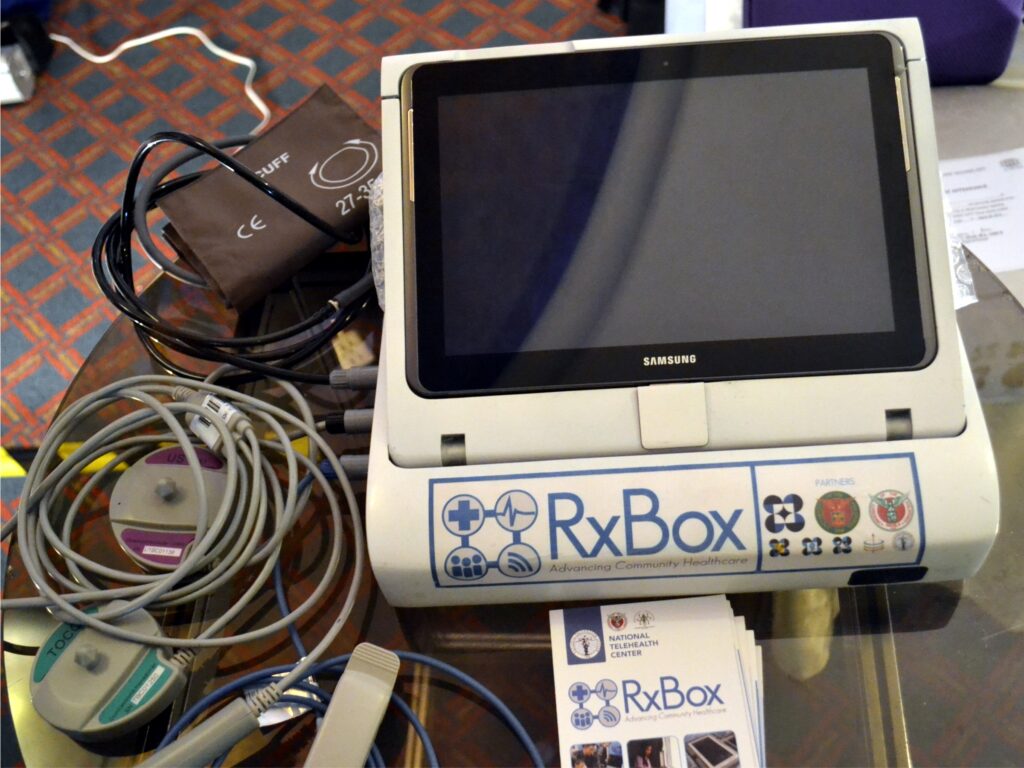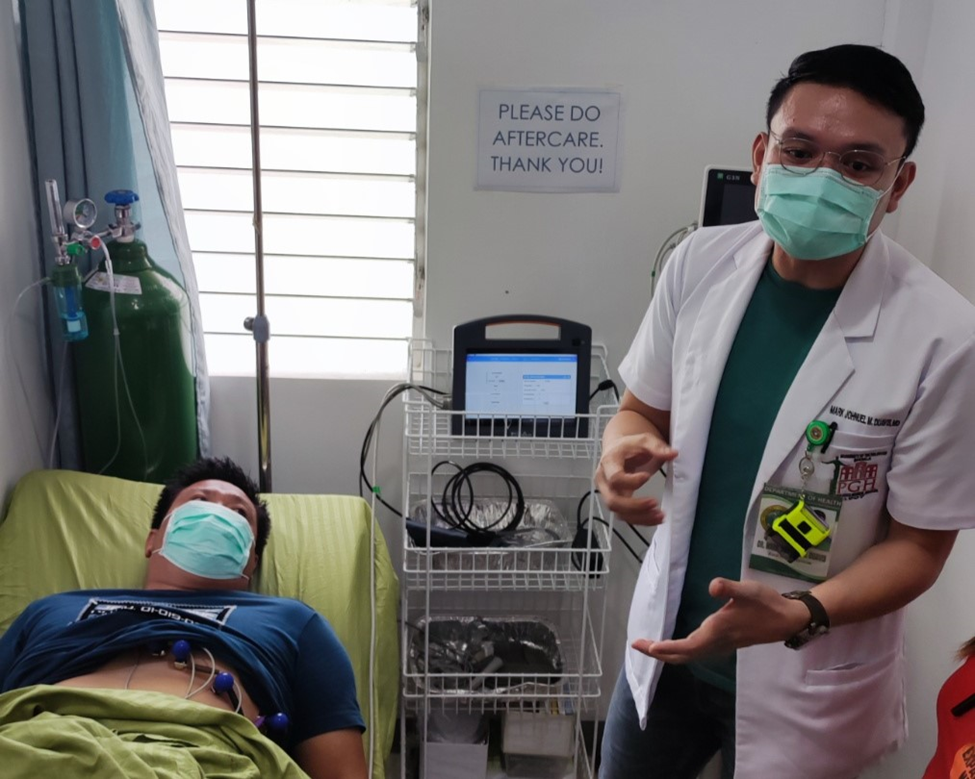Text by Henrylito D. Tacio
Photos courtesy of DOST
Mario, now 68, lives in a remote barangay in Bansalan, Davao del Sur. He said he had never been to a hospital when he was younger. But lately, he has had a hard time seeing things. Since he could not move well, as he used to do, he gained weight.
He would never know what he was suffering from had it not been for a medical mission conducted in their area. His younger brother helped him to join the other residents. One of the doctors examined him closely. He was told that the reason his vision was waning was due to diabetes.
Mario was still lucky. He found out what disease struck him. But others living in far-flung areas don’t have such blessings. In fact, 60% of the 94 million Filipinos today die without seeing a doctor. That’s one for Robert Ripley’s “Believe it or not.”
The reasons for such a high rate: lack of medicines and other life-saving technology, improper distribution of health workers, geographic isolation (particularly those in the islands or without electricity), and commercialized medicine (expensive and out of reach of the poor people).
So, how can these deprived people be helped? To think, the government launched the Universal Health Care (UHC), also referred to as Kalusugang Pangkalahatan, during the administration of Benigno Aquino, Jr. Through UHC, all Filipinos are provided “the highest possible quality of health care that is accessible, efficient, equitably distributed, adequately funded, fairly financed, and appropriately used.”
UHC is a government mandate aiming to ensure that every Filipino shall receive affordable and quality health benefits. Yes, despite the gains of the health sector in recent years, the challenge of delivering improved healthcare services remains.
One of the constraints identified is “the availability of, access and equity of access to, health professionals and health facilities,” adding that “90% of specialists and 60% of tertiary hospitals are in urban areas” like Metro Manila, Cebu, and Davao.
Another constraint is “the archipelagic nature of the country where there are many geographically isolated and disadvantaged areas.” The Philippines, after all, has more than 6,000 islands.
Some experts have identified one possible solution: maximizing the established benefits of information and communications technology (ICT) in health care. Doing so will “enable communication and connect patients, health technology, and health providers.”
Thus, the idea of RxBox came into existence. Touted to be “one of the most important tools generated by the research community,” RxBox is a multi-component program designed to provide better access to life-saving healthcare services in isolated and disadvantaged communities in the country. It is among the efforts of the Department of Science and Technology (DOST) for the so-called “Smarter Philippines.”
RxBox is an instant hit in areas where it has been introduced. “There’s a big change since we know we have a device which we can really trust. Just in the result alone, we already know what to do,” said a public health nurse in Sabtang, Batanes.
“If that device is not around, I don’t know if my child and I are still alive today since our lives were in danger then. We didn’t know if my child was okay or if my blood pressure was okay. Maybe one of us died already,” said a 19-year-old mother, also from Sabtang, Batanes.
“Now, even rich people come here for consultation,” said Dr. Iris Tagaro of Villareal, Samar. “Members of our staff are empowered, unlike those from other rural health units that if there’s no doctor, there’s no consultation. Here, they have high regard for our nurses and midwives.”
As of January 2023, there are 781 units of RxBox that have been deployed in the country’s geographically isolated and disadvantaged areas, according to a press release from the Department of Science and Technology (DOST).
“We want the device to be placed in areas where doctors are hard to find and traveling to the cities is a big problem,” said the National Telehealth Center (NTHC), an agency which equips doctors and health workers with eHealth and Telemedicine tools for quality health care.
Actually, the RxBox is a product of NTHC’s collaboration with the Electronics and Electrical Engineering Institute of the University of the Philippines-Diliman and the Advanced Science and Technology Institute of the DOST.
Funding for the project comes from the Philippine Council for Health Research and Development (PCHRD) of the DOST. An RxBox unit costs around P100,000. But should it be multi-produced, the cost can be lowered to P80,000.
What makes the RxBox unique is that it has a sensor that can measure the patient’s blood pressure to detect cardiovascular problems, especially hypertension. It also has an electrocardiogram (ECG) which can monitor the heart’s movement. This is helpful for people with acute and chronic heart problems.
Another sensor is the pulse oximeter, which can measure the level of oxygen in the patient’s blood. This sensor can help detect lung and cardiovascular problems. It also comes in handy during the coronavirus disease pandemic.


There is also a fetal heart monitor (that measures the baby’s heart rate while in the womb and can help detect fetal distress at critical times of the pregnancy and delivery) and maternal locometer (which measures the strength of contraction of the mother’s uterus especially during delivery).
Through the RxBox, patients in far-flung areas may receive advice from doctors and health workers situated elsewhere.
The NTHC further explained: “The RxBox can capture medical signs with its built-in sensors, save the data in an electronic medical record (using the Community Health Information Tracking System or CHITS), and transmit the information via internet to clinical specialists in the Philippine General Hospital.”
According to the Department of Health (DOH), RxBox helps address the lack of doctors in the provinces, with 90% of specialists and 60% of tertiary hospitals clustered in urban areas.
The RxBox project is “a testament to what we can accomplish together as one – guided by our vision to bring Science, Technology, and Innovation (STI) closer to our communities,” said DOST Secretary Renato U. Solidum Jr. in a press statement.
He said that the recent COVID-19 pandemic has highlighted the need to address the problem of access to quality healthcare, which the RxBox was developed for even before the start of the pandemic.
“Through the RxBox multi-stakeholder project, we have immensely contributed to saving lives especially during the height of the pandemic. Through our courageous and dedicated employees, we were able to reach far-flung and isolated places to deliver science and technology interventions. This entails working closely with the communities that we serve and respond to their needs. This project will continue to transform healthcare and people’s lives as long as we continue to work as one,” he said.
Sec. Solidum also added that Filipinos often overlook the importance of health, “but we must keep in mind that the greatest asset and most important natural resources of any country is its citizens.”
He quoted the old adage which said, “Health is wealth.” “The overall health of every citizenry determines the long-term progress of their country. People are the wealth generators, so we must take care of them,” he said.
Incidentally, Sec. Solidum said that affordable healthcare and strengthening primary healthcare in underserved communities are among the priorities of President Ferdinand R. Marcos Jr.
“We at DOST share these goals and will continue to be instrumental in developing innovative solutions that will prepare our country to withstand another pandemic should there be a similar experience in the future, and to promote the health and well-being of our kababayans,” he pointed out.
Dr. Jaime C. Montoya, PCHRD executive director, echoed the same opinion. He said that seeing many rural communities benefit from the project made it “totally worth it.”
Spanning the administrations of four presidents and four DOST secretaries, Dr. Montoya said that efforts from the conceptualization of the RxBox Project in 2009 up to the actual deployment is really worth it, definitely worth it.
“If there is a technology that really benefits the Filipino people, this is it. The RxBox really captures the concept of Universal Health Care. This is what science is for,” he said.
RxBox, he surmised, is a good example of the whole-of-country approach – that everyone has to converge for the grassroots.

